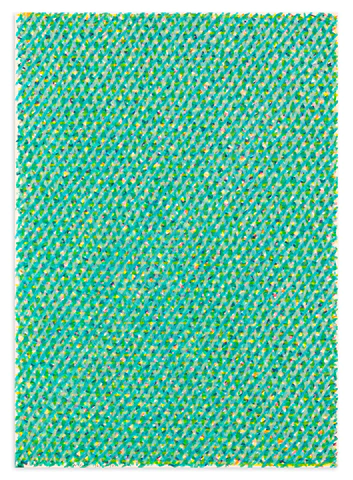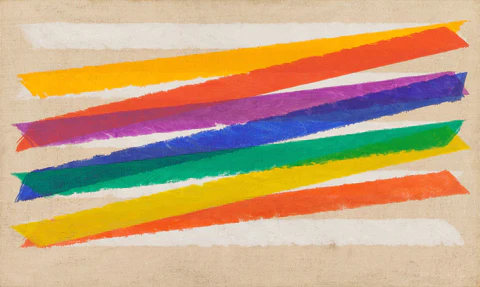ART INDEX: Piero Dorazio
Pietro Dorazio (Rome, 1927 – Perugia, 2005) was one of the most famous representatives of the Italian Abstract movement of the 20th century.
After the rise of the Fascist dictatorship, the Italian artistic scene had been focused on figurative art. Dorazio, drawn to the arts since an early age, was instead captured by the shapes of the Cubist movement, which also represented a reaction to the official line of the arts. After earning his degree in Architecture at the University La Sapienza in Rome, in 1947 he won a scholarship at the all’École des Beaux-Arts in Paris. There he connected with the main French cultural circle, meeting artists such as André Breton, Henri Matisse, Joan Miró, Le Corbusier, Georges Braques, Hans Arp, and Fernand Léger. Back in Rome, he treasured his French experience, and it really showed in the art he created. He later showed his artwork in the United States, where he was in touch with great artists such as Klein, Cornell, Motherwell, Duchamp, and Rothko. He was constantly challenged by these cultural exchanges. His first solo show was, in fact, organized in New York, at the Rose Fried Gallery (1954), followed by his second solo show in Rome at the La Tartaruga gallery (1957). After many international rewards and after having travelled extensively through Europe and the United States, in 1973, he finally settled in Todi, a small village in Central Italy. There, he founded his own studio and residency. Todi thus became a focal point of the Italian Abstract movement, welcoming national and international artists.
In 1945, when the Second World War ended, the Italian artistic scene was evolving to leave behind any naturalistic or social reference. Italian artists were leaving behind natural and social references in favor of a simpler and newer artistic language, which in line with the international scene. Moving in this direction, Dorazio founded, together with other Italian artists such as Carlo Aymonino and Achille Perilli, the Gruppo Ariete. Subsequently, he founded the Gruppo Arte Sociale and, finally, in 1947, he founded the Gruppo Forma 1. The Gruppo Forma 1 involved the participation of Carla Accardi, Ugo Attardi, Pietro Consagra, Mino Guerrini, Achille Perilli, Antonio Sanfilippo and Giulo Turcato. Their aim was to release the arts from a psychological or realistic dimension and to associate it on a geometrical level, where lines and shapes were the main and only characters. This was what would influence, from this point on, all of Dorazio’s artistic career.
Dorazio has claimed, throughout his life, that abstract painting represented nothing more than itself, with the lines, the shapes and the colors acting as transmitters of emotions and sensations. The abstract and the unreal were thus capable of conveying real feelings.
His work went through a lot of changes, as it is typical of the artists of the 20th century, who adhered to many different styles throughout their lives. At first, he focused his attention on landscape painting of the Roman countryside. Then, he moved towards to the Impressionist and Cubist representation before once again shifting into the Futurist Italian movement. Eventually he moved closer to Constructivism and to a more material painting, finally landing within the Abstract movement.

Piero Dorazio, Quasivert, 1970s, serigraph, 69.5 x 49.5 cm (© Artprice.com)
Dorazio’s Reticoli (i.e lattices) of the 60s and 70s are some of his most iconic works. They are characterized by dense brush strokes and by the mixture of the three primary colors; red, blue, and yellow, used almost in a Divisionist manner.
Other than the Reticoli, he also investigated the use of the lines within the composition, by overlapping them obliquely, horizontally, and vertically. His later compositions became more rhythmic and were full of contrasts. One of the constants of his late production and research was the focus around structure and composition, which he brought into his latest works in the 00s.

Piero Dorazio, Unitas, 1965, oil on canvas, 45.8 x 76.5.5 cm, Peggy Guggenheim, Venice (© Peggy Guggenheim)
He is now renowned as one of the main proponents of the 20th century Italian Abstract movement. The oldest action result registered is a painting sold in 1984 at Sotheby’s, while the most recent auction is a print sold in 2022. Sixteen works by Dorazio will soon be available in auction rooms.
Sources
Artprice.com

